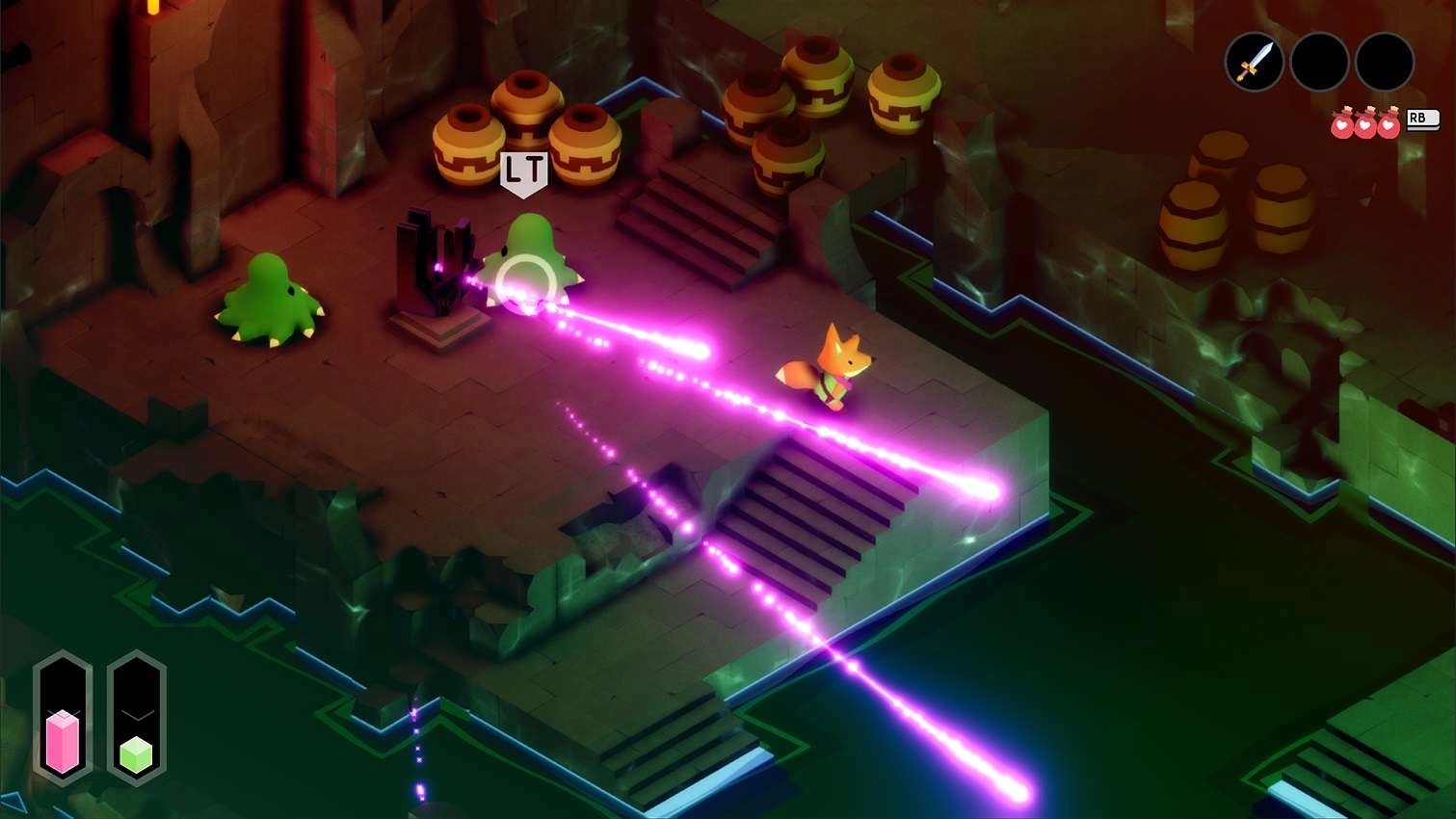
Tunic is a beautiful and charming little indie title that harkens back to the old-school Legend of Zelda releases that clearly inspired it.
We’ve had no shortage of games lately that have been built around patience and deliberate actions: Sifu and Elden Ring kicked things off for February. Now comes Tunic, an adorable Zelda-inspired adventure game that draws game design from those around it. Things are made more impressive here because Tunic was developed by one person, which explains why it’s been a long time between announcement and release. Nonetheless, Tunic is a beautiful and charming game, no matter how long it took to release.

At the outset, Tunic shows its inspirations on its sleeve. Much like Elden Ring, it does its best not to hold players’ hands as they explore, opting out of text explanations of mechanics, and turning them into game manual collectibles players will find throughout the world. Tunic‘s approach to tutorials is really smart, and as players find pages, they can open up an old-school game manual that doesn’t even directly explain how to do things. Almost all the text in Tunic is its own language. So you won’t be able to read anything, but pictures give enough of an explanation on how mechanics work that players should have some idea.
Uncovering the in-game manual in Tunic almost felt like a game within a game. It was a driving motivator for me because the pages scattered around the world would populate pages in non-chronological order, but it never felt like Tunic was working against me. It almost always made me feel like I was in control, giving me just enough information to accomplish my task but never holding my hand through it. It gave me the chance to discover (again, much like Elden Ring), but never felt like I was just wandering aimlessly.
Tunic also doesn’t bombard players with new items and mechanics. Things are paced very deliberately here. When you wash up on the beach with no items, you’ll quickly find a stick to fight off enemies. Then a sword. Then a shield. However, it waits until you’ve learned how to use each key item well enough before it gives you the next one. It’s a smart move as players will end up exploring a lot of the world until they’ve found a lot of the hidden secrets. Tunic’s world is broken up into smaller rooms with an isometric point of view. Moving into a new area will completely change the perspective much like the old-school Zelda titles.
The camera change between areas really highlights how beautiful Tunic‘s world is. It’s simple in design, but the high fidelity textures and often colorful areas pop. The enemies here are varied and well designed as well. Combat is tough but fair, and the dance players will do is rewarding enough. The stamina bar often felt like it was depleting very quickly, but that just meant I had to re-approach combat. It reminded me a lot of last year’s excellent Death’s Door. That game had so many different enemies I felt like I was constantly readjusting how I approached encounters. That same idea is present here. There are many bosses in Tunic, and experimentation is key.
When you die – and you will a lot – you get transported to an area with what appears to be a fox god that brings you back to life at the last area you rested. You’re free to try again at that point, and you can even recover some of the gold you’ve accumulated that was lost on death.
Conclusion
Again, Tunic doesn’t do a lot new that other games haven’t already done or experimented with. It feels like an amalgam of adventure games of old that don’t hold your hand and actively want players to explore and uncover the world. Tunic is beautiful, charming, and just challenging enough to encourage players to try again over and over, all while exploring its world to uncover secrets. It’s mostly linear, but that won’t discourage players from trying to track down all the hidden nooks and crannies.
Game Freaks 365 received a review copy.
